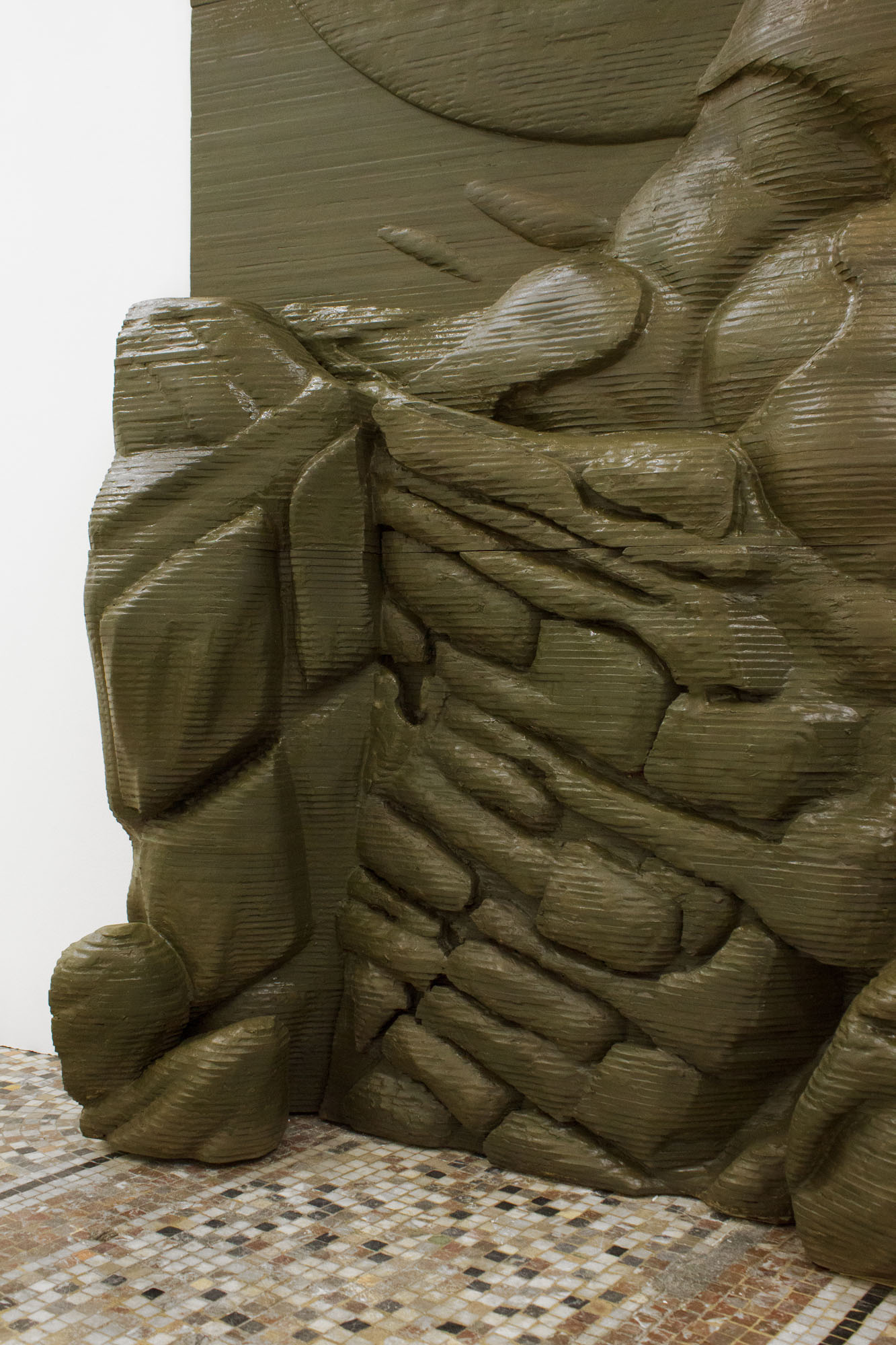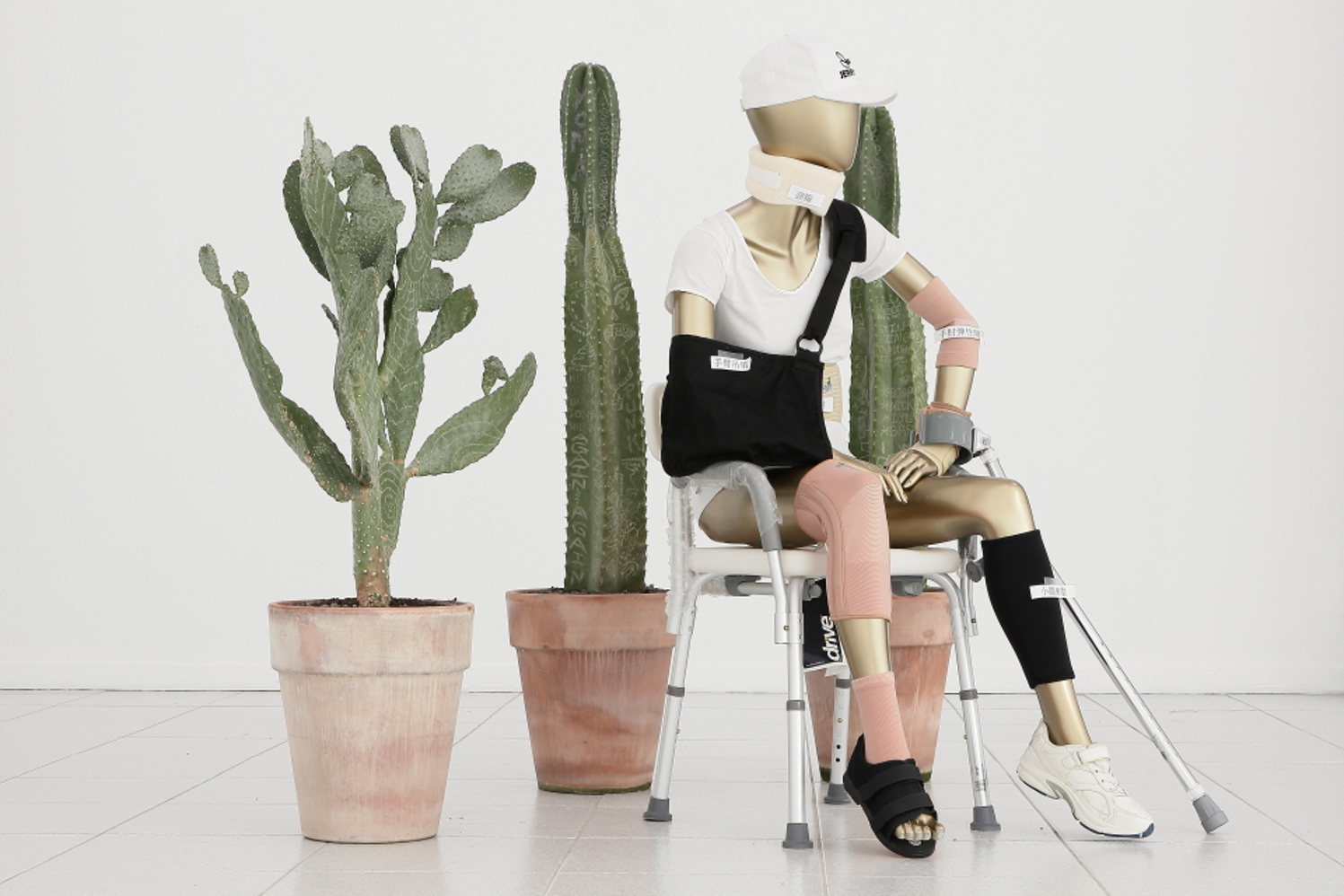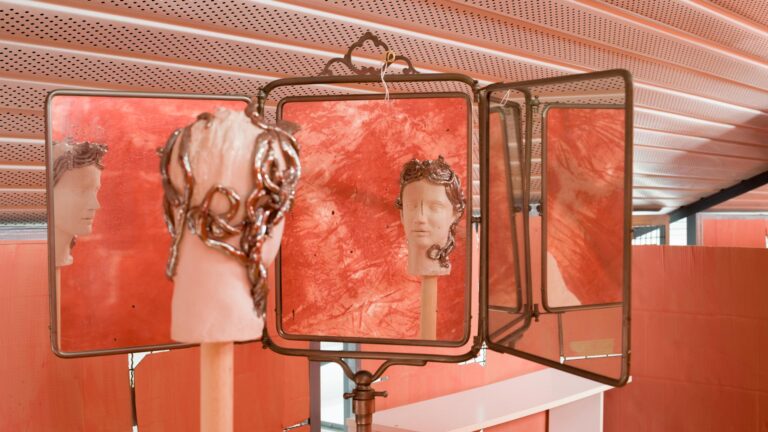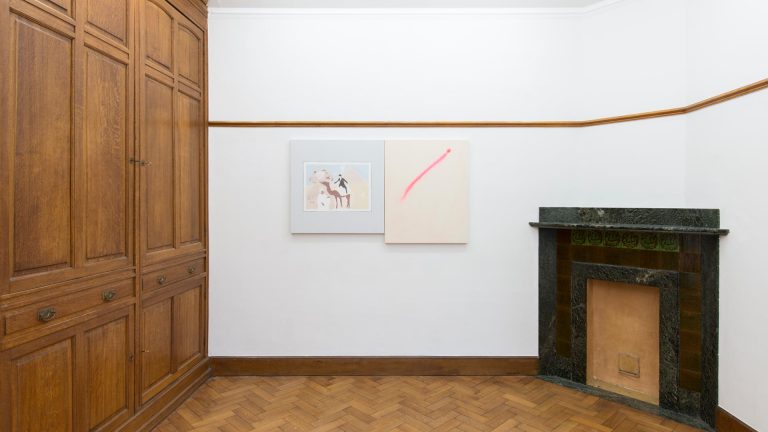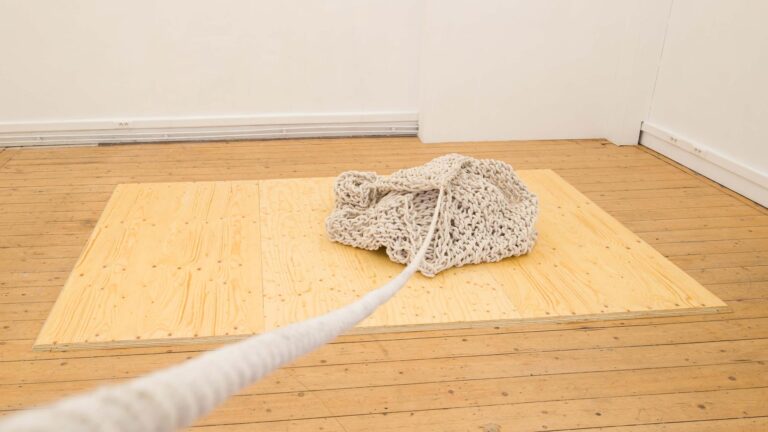Artist: Mirko Canesi
Exhibition title: VERDANT
Invited by: Pietro Di Lecce
Venue: Deborah Bowmann, Brussels, Belgium
Date: November 15, 2019 – January 18, 2020
Photography: all images copyright and courtesy of the artist and Deborah Bowmann, Brussels
Mirko Canesi’s research undermine our certainties in what reality is, dismantling the dualistic belief that sees humans and nature as distinct entities. Working on the blurry line that carves natural artifice and arti-ficial nature, the artist advances hybridization as a critical and transformative tool able to go beyond hu-man assumptions.
In Ecology Without Nature (Harvard University Press, Boston 2009), Timothy Morton proposes to leave behind the old-fashioned dichotomy human/nature, advocating for a symbiosis between the two realms. In this sense, Canesi continuously experiments a transposition of virtuality into reality and vice versa, testing the effects in the viewer’s perception and in our definition of the contingency.
The exhibition “Verdant”, conceived for the gallery Deborah Bowmann, is a radical immersive installation regarding the above-discussed transitional state. The show shares the title with the homonymous penta-chord fragrance “Verdant” composed by the Swiss perfumer Andy Tauer and known for the attempt in imi-tating nature and all the scents typical of the undergrowth.
At inhabiting the gallery’s space is Rocaille (2019), a massive wood high-relief reproducing a frame of Agony, the video game masterpiece published by Psygnosis Limited in 1992.
Made in different layers of poplar plywood cut by laser and then assembled and painted in olive-green, Rocaille gives tridimensionality to an imaginary conceived to live in the flatness of the TV screen.
Agony is a side-scrolling shoot ‘em up game with a surreal fantasy background where the player avatar is an owl firing with echo-location waves. Psygnosis developed a very characteristic imaginary that hybri-dizes fantasy characters with a naturalistic panorama. Operating as a proper artistic team, they proposed a refined aesthetics far from the classical shoot-them-up plays. Suffice it to say that the player avatar is a bird that flies within what it seems a Romantic landscape with a sombre and introspective atmosphere. The owl’s sound waves, but also the power up objects (object that adds temporary benefits or extra abili-ties to the player character) spread out on the game, are faithfully reproduced in the high-relief. The sur – face is painted with tones of hunter green, pastel sage and hearty shadow recalling the model making.
The gallery space is also invaded by a mix of fragrances aimed at recalling the Verdant’s bouquet of dewy leaves, suave leather, brown tobacco, sweet earth and vibrant amber. At the entrance it is possible to per-ceive the balsamic and penetrating green notes, while getting close to Rocaille smoked and dry scents of lather and tobacco are more pervasive.
This olfactive spatiality dialogues with the verticality and the physical presence of the high-relief demons-trating the artist’s ability in building immersive environments where visitor’s sense and perception are chal-lenged. All Canesi’s research is marked for a dose of acrobatics, where syntactical materials have been compelled as to give them a natural semblance. It is an action of hacking that scrambles the hierarchies between us and them, challenging the idea of nature as a incontestable ontological model. Canesi’s visual scenario is able to reconfigure the dialectical flatness of the dualisms as subject and object, nature and culture, fiction and reality, articulating a lateral reading of reality and its representation.
-Giulia Gregnanin








